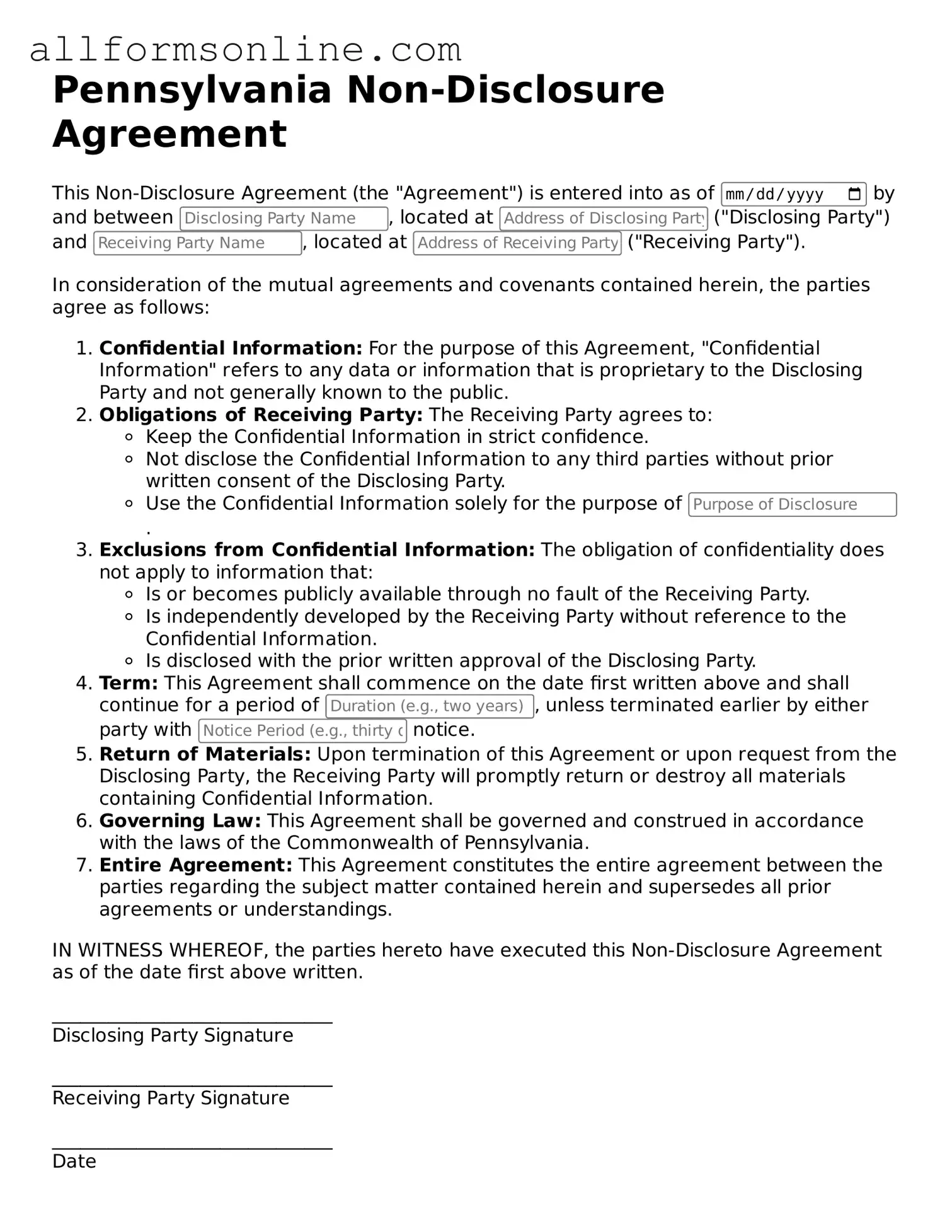What is a Pennsylvania Non-disclosure Agreement (NDA)?
A Pennsylvania Non-disclosure Agreement is a legal contract that protects confidential information shared between parties. It ensures that sensitive information, such as trade secrets, business plans, or proprietary data, remains private. By signing this agreement, parties agree not to disclose or misuse the information provided during their business relationship.
When should I use a Non-disclosure Agreement?
You should consider using an NDA whenever you plan to share confidential information with another party. This includes discussions about potential partnerships, joint ventures, or employment situations where sensitive information may be exchanged. An NDA helps establish trust and provides legal recourse if the information is misused.
What are the key components of a Pennsylvania NDA?
A typical Pennsylvania NDA includes several important components. First, it clearly defines what constitutes confidential information. Second, it specifies the obligations of the parties involved, outlining how the information should be handled. Third, it establishes the duration of confidentiality, indicating how long the parties must keep the information private. Finally, it may include remedies for breaches of the agreement, detailing the consequences if a party fails to comply.
Can I enforce a Non-disclosure Agreement in Pennsylvania?
Yes, NDAs are enforceable in Pennsylvania, provided they meet certain legal standards. The agreement must be clear, reasonable in scope, and not overly broad. Courts will generally uphold NDAs that protect legitimate business interests. If a breach occurs, the injured party may seek legal remedies, which can include monetary damages or injunctive relief to prevent further disclosures.
